In this article, I will discuss how one can track wallets on the Solana network. Tracking wallets on Solana make use of blockchain explorers and portfolio tracker services to keep track of transactions, asset movements, and network interactions.
This tracking turns out to be very useful in understanding wallet activity and monitoring one’s crypto assets on the Solana network.
What Is A Solana wallet?
A Solana wallet is a computerized device particular to the Solana ecosystem where you can store and manage your private keys, send and receive assets, and interact with dApps such as DeFi systems or NFT marketplaces.
A crypto wallet does not store the assets themselves, rather it secures your private keys which are stored on the blockchain. This is why your private keys need to be secured. If you lose them, you cannot access your SOL or use Solana dApps.

Most custodial wallets function similarly to banks by retaining a reserve of crypto in wallets they control and issuing users an email account to access funds.
But with crypto, self custody is critical, you own your assets therefore the responsibility of securing them also lies with you. What type of a crypto wallet do you need to get the optimal experience while Solana surfing? Let’s find out.
Types Of Wallet
To manage Solana assets efficiently and safely, one has to be aware of the types of wallets that can store it. Here is a brief overview of available wallets that work with Solana.
Software Wallets
Software wallets are apps available on computers and mobile phones that offer easy administrative control over a user’s funds on Solana. The notable options are:
Phantom: This wallet is built for Solana and is user friendly. Phantom is a non custodial wallet and, allows the user to save SOL coins, SPL tokens, manage NFTs and use various decentralized applications (dApps).
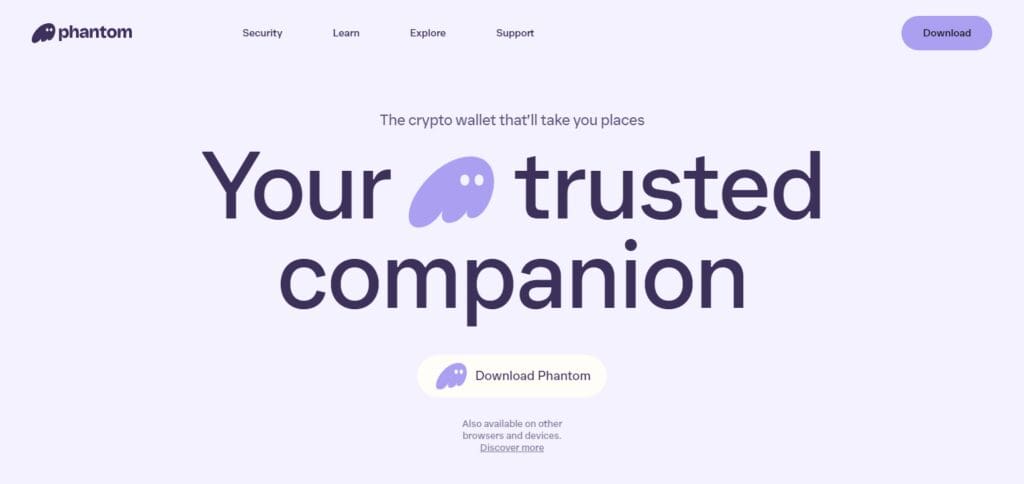
Solflare: Solflare is also a non custodial wallet which is built for Solana and allows staking, token swaps and NFTs. Users can access Solflare via web browsers, extensions and mobile applications.
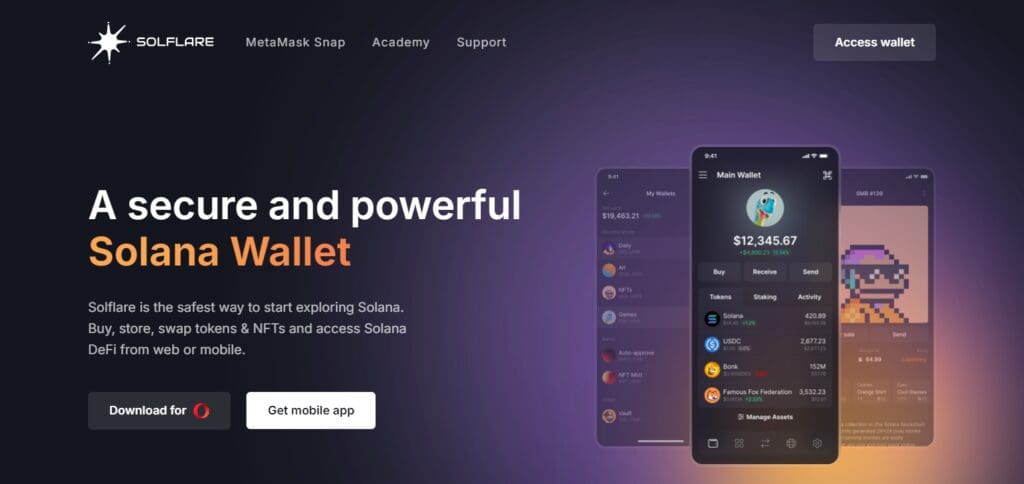
Exodus: Exodus is a multi-currency wallet that includes Solana and supports over 100 cryptocurrencies. It is available for mobile and desktop and also has a built-in exchange.
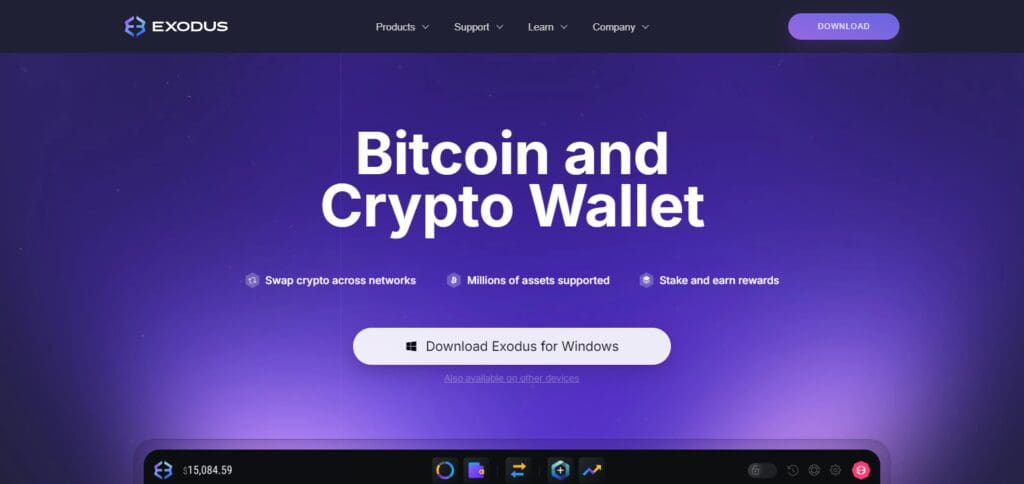
Hardware Wallets
Hardware wallets are specialized tools that allow you to store your private keys off the internet for optimal safety. Among the best hardware wallets that work with Solana are:
Ledger: Ledger is a French company that makes secure hardware wallets and devices like the Ledger Stax and the Nano X. These wallets, which Solana and a multitude of other cryptocurrencies support, keep your private keys securely offline.
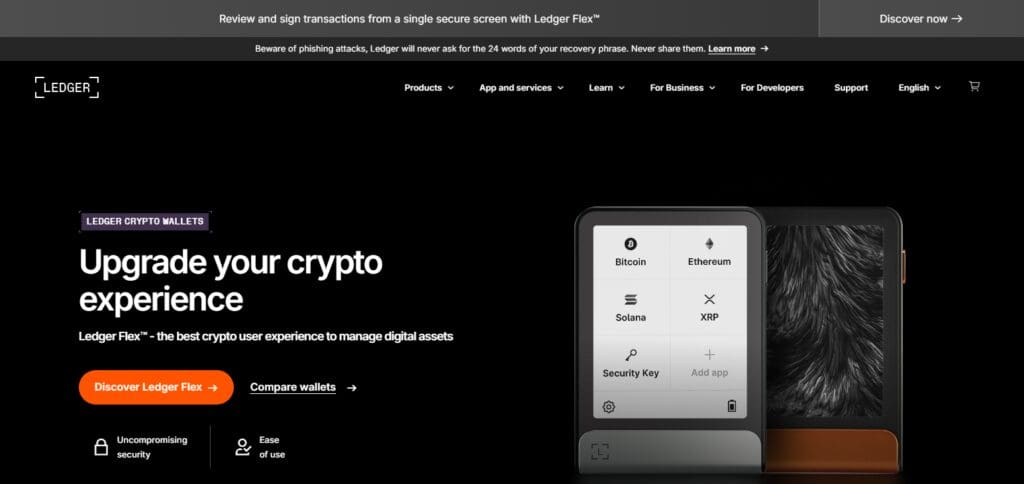
Trezor: The Trezor Model T and other Trezor hardware wallets support SOL and SPL tokens, allowing users to manage their Solana assets offline in a safe manner.
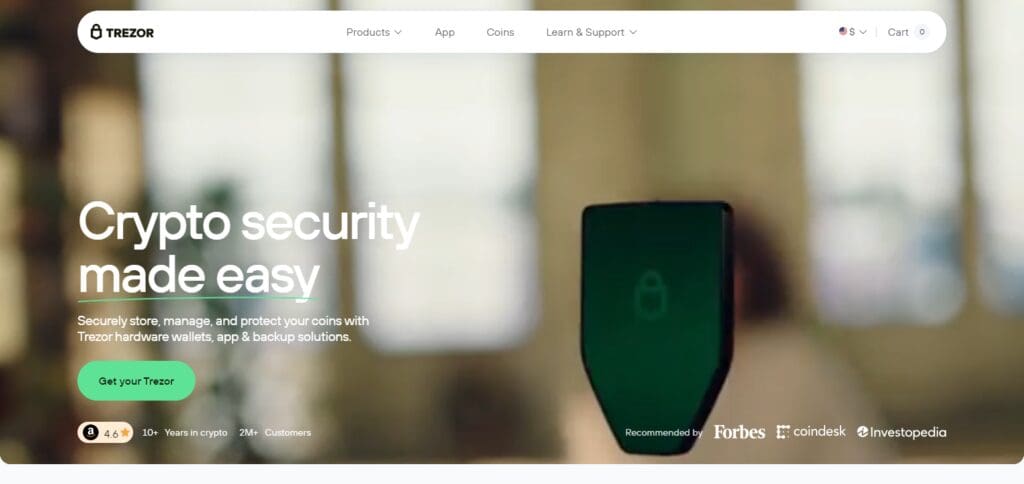
You may check the official website of Solana for a complete list of compatible software and hardware wallets.
The Different Methods To Track Solana Wallets
Keeping an eye on Solana wallets gives important information on the movement and usage of funds in the network, allowing users to base their decisions on certain trends and activities. Here is the best way you can keep track of Solana wallets:
Using Blockchain Explorers
Explorers provide overviews of transactions, wallets, and other network activities on Solana. They provide real time data on transfers, staking, and more; thus, maintaining transparency on all interactions that occur on-chain.
Solscan
Solscan is one of the Solana affiliated explorers and is the most common one used. Solscan helps users filter through transactions, blocks, wallet addresses, and tokens with much ease.
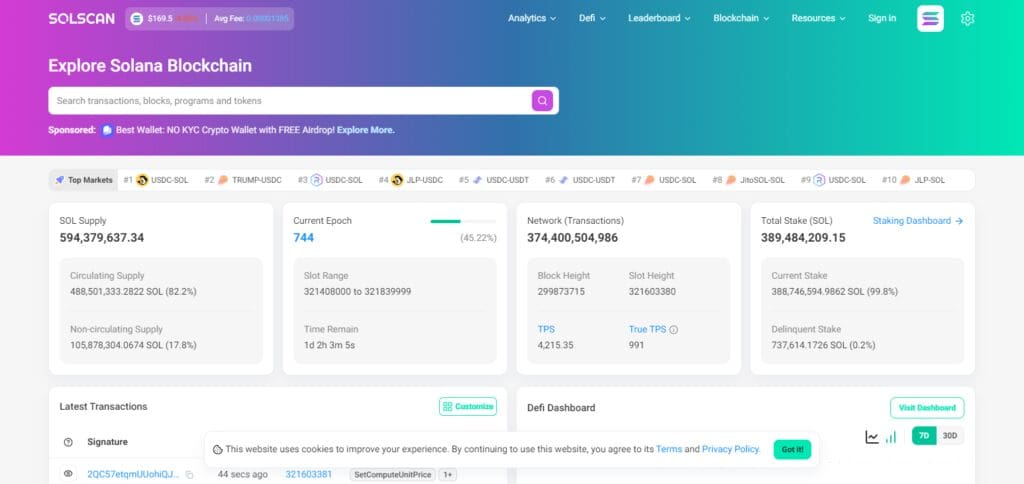
Users can search through transaction history, wallet activity statistics, and queries for DeFi or NFT markets in the Solana ecosystem. Easier use and data tracking makes it an excellent source for casual and advanced users alike.
Solana.fm
This explorer serves fast and easily understandable access to Solana-based data. It makes it easy for users to track huge transfers, keep track of wallets, and understand accounts and their respective transactions.

The Quantum Explorer Preview increases performance and broadens protocol support to include many DeFi protocols such as Jupiter, Magic Eden, and Tensor, and improves the user experience by making it easier to use.
Solana Explorer: The in-house instrument of the Solana team, the Solana Explorer provides data on the performance of the network, wallet interactions, and validators. It’s best for people looking for official data inferences of Solana’s ecosystem.
Looking at Wallet Activities
To fully comprehend the dynamics surrounding a Solana wallet, you may want to look at these factors:
Date and Time Stamps: Each transaction comes with a date and time, enabling users to monitor the movement of assets over time in order to detect patterns like structural transfers or actions taken during certain volatile market periods.
Transaction Amounts: The amount of SOL or other SPL tokens that were moved serves as an indicator of the wallet’s activity level.
Major transfers speak to the existence of a “whale” or high-value holder, while deficient, daily movements may indicate passive activity like staking and NFT buying.
Transaction Fees: While the Solana network is known for very low transaction fees, the fees paid still serves its purpose.
If transaction payment is higher than usual, it indicates a rush or high demand for transaction processing and sheds light on the network activity at that point in time.
Transaction Hashes: Every transaction comes with an associated hash which is used as a fingerprint to check if the transaction is authentic.
By tracking these hashes, users are able to check a wallet’s history to ensure that every transfer is real and recorded on the blockchain.
Solana Addresses: These serve as an identifier of where funds are coming from and going to in each transaction.
Studying the addresses a wallet has dealings with, or Aave, can pinpoint cross wallet asset movement, relationships, connections to bigger infrastructure like exchanges, or DeFi, which offers greater perspective on a wallet’s activity in the Solana ecosystem.
With the application of these methods and tools, users can always actively track Solana wallets to gain important information on funds movements and network participation in order to make better decisions within the Solana ecosystem.
Benefits of Tracking Solana Wallets
For users who are deep into the blockchain ecosystem, monitoring Solana offers its own set of advantages.
Analyzing Fund Movements
Tracking the investments of major fund holders can show which aspects of the Solana ecosystem are flourishing or which ones are facing an inflow or outflow of investment.
Anticipating Market Dynamics
Some signs of Solana gaining or losing market sentiment can be gauged by tracking an address’s activity, such as large movement of assets in and out of the wallet or change in staking activities.
Identifying Emerging Patterns
Changes in engagement with certain DeFi platforms, NFTs projects or other blockchain initiatives can also be spotted by tracking wallets which may show trends in new market interests developing or large scale of specific assets.
Utilizing Real-Time Monitoring Tools
Tracking metrics on platforms like Telegram can help in monitoring wallet activities and trading patterns, showing some primary information on user behavior.
Although these resources are helpful for forming strategies, it is important to understand that each user’s circumstances are different which means that seeking to replicate trades will most likely not yield preferred outcomes.
Rather, they aid in formulating a user’s own approach to trading within the Solana ecosystem.
Analyzing Solana Wallet Activity
Tracking the activity of a Solana wallet on the blockchain involves examining several key elements that provide insights into its transaction history, asset movements, and network interactions.
Date and Time Stamps
Each transaction on the Solana blockchain is recorded with precise date and time stamps. This data allows users to monitor when funds are moved, helping to identify patterns such as regular transfers or activity influenced by market events.
By analyzing these timestamps, one can gauge the frequency of a wallet’s transactions and its responsiveness to market conditions.
Transaction Amounts
The volume of SOL or other SPL tokens transferred in each transaction offers a glimpse into the wallet’s activity level. Large transfers may indicate a significant holder or “whale,” while smaller, frequent transactions might suggest routine uses like staking rewards or NFT purchases.
Examining these amounts can help assess the financial impact of a wallet on the wider Solana market.
Transaction Fees
Despite Solana’s reputation for low transaction fees, the fees paid can still provide valuable insights. Higher fees might indicate a preference for quicker processing during times of network congestion.
By monitoring the fees associated with a wallet’s transactions, one can infer the urgency and priorities behind its activities and understand the network demand at the time of the transaction.
Hashes
Every transaction on Solana is linked to a unique hash, a digital fingerprint ensuring the transaction’s integrity. These hashes enable users to delve into specific transactions, verifying their validity and tamper-proof nature.
Reviewing transaction hashes helps trace a wallet’s transaction history, confirming the authenticity and proper recording of each transfer on the blockchain.
Solana Addresses
Solana addresses represent the sources and destinations of funds within each transaction. A wallet may contain multiple addresses, and tracking these addresses reveals the flow of assets between wallets.
Analyzing the addresses a wallet interacts with can uncover relationships between wallets, identify patterns, and even detect connections to larger entities like exchanges or DeFi platforms. This information offers deeper insights into a wallet’s role in the broader Solana ecosystem.
Apps for Tracking Crypto Portfolios That Are Solana Compatible
CoinStats
CoinStats is one of the most popular tools for tracking portfolio investments, assets and wealth of investors in distinct currencies and blockchains like Solana.
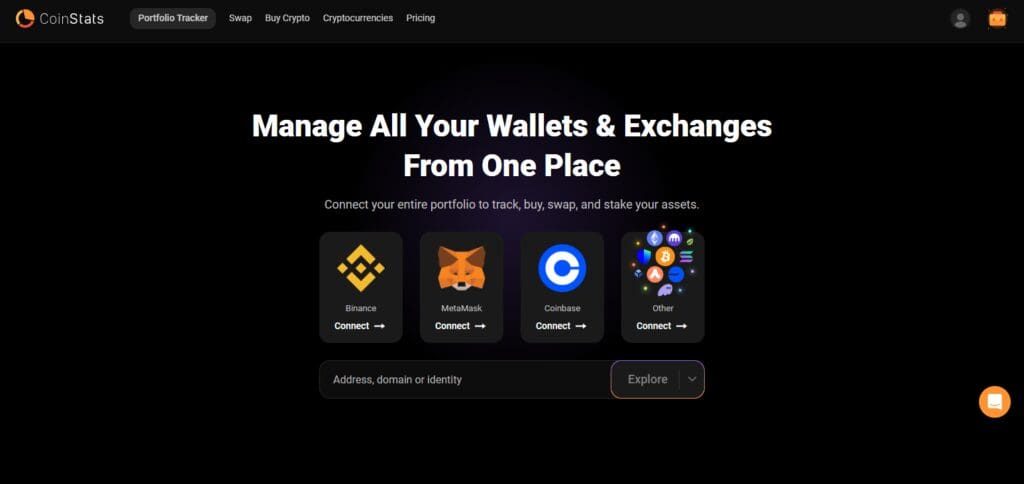
It aids cryptocurrency investors in managing several assets and exchanges with a single tool so they can get a real time glimpse of the market and their investments.
SonarWatch
SonarWatch is a multichain dashboard and API that facilitates monitoring DeFi portfolios and the web3 ecosystem. It integrates with Solana, Sui, Aptos, Ethereum, Bitcoin, Avalanche, Polygon, and BNB Chain.
With open-source products and APIs, SonarWatch improves the onboarding experience and strengthens financial literacy on-chain.
Cielo Finance
Cielo Finance is an on-chain analytics service building sophisticated Telegram bot solutions for blockchain data and providing users with a web application.
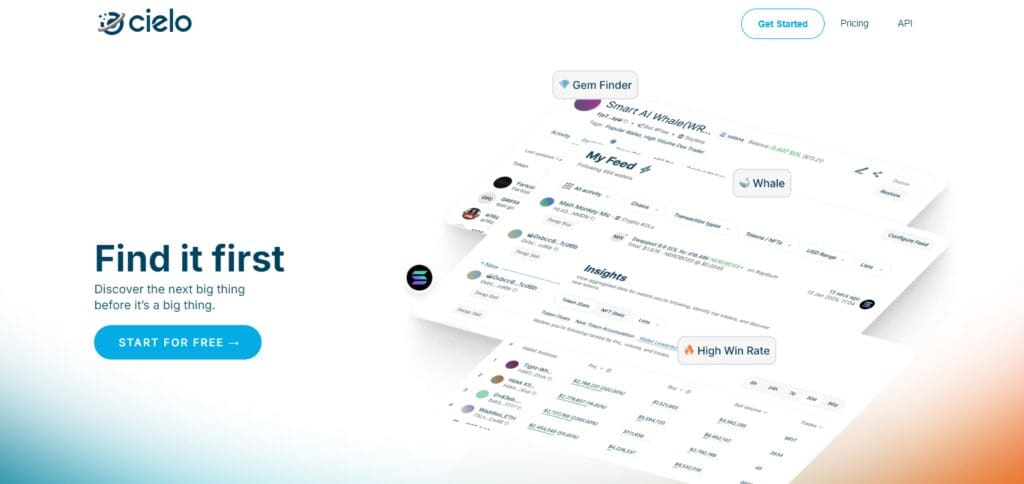
The unique offering helps users on-board relevant on-chain information and segments its builders on the unmatched transaction monitoring canvas. EVM Wallet Tracker provides unparalleled transaction monitoring.
Solana Supporting Capital Market Tools for Blockchain And Crypto Analytic
Analytic tools help to gauge the market and detect shortcomings, market security breaches, and investment windows. Advanced analytical features offered by most of these services though paid subscription plans often go far beyond the basic information provided by free blockchain explorers.
Bubble Maps
Bubble Maps assist users in monitoring trends and important activities within the global market as it visually illustrates crypto transactions and wallet movements within an intricate interface.
Arkham Intelligence
Arkham Intelligence provides advanced users with the ability to scrutinize the movement of smart money as well as wallets while assessing risks and opportunities within the blockchain technology and the crypto world.
Dune Analytics
Dune Analytics is a comprehensive solution for the market that derives its power from the community, allowing users to create custom reports and share them with others along with providing valuable analysis for blockchain data as well as market activity.
Telegram Bots for Solana
RayBot
Solana RayBot is a versatile free Telegram bot that allows you to monitor Solana wallets’ activities in live mode. Furthermore, notification of real-time transactions and activities on the wallets being monitored can be received.
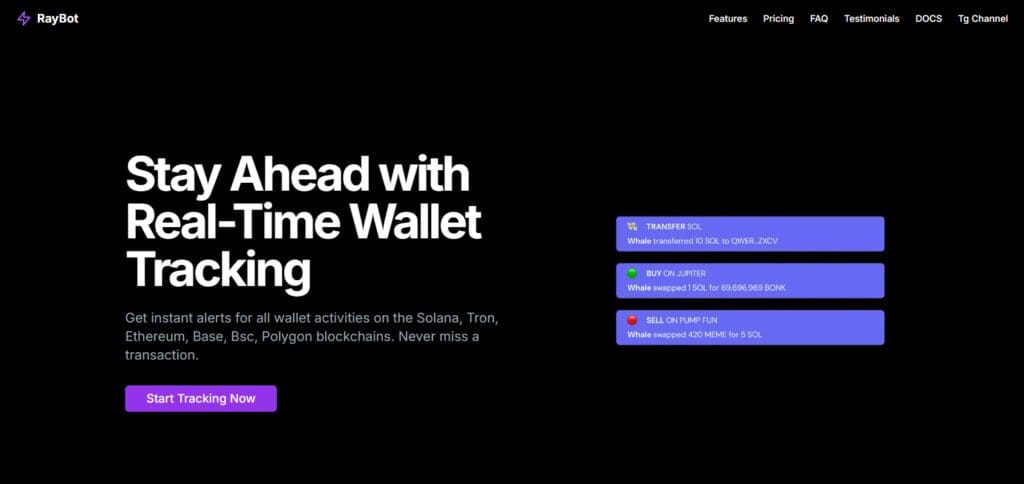
This feature makes it easy to track whale wallets or even set alerts for particular Solana addresses. With optional features available through subscriptions for advanced users, Solana RayBot is integrated with Telegram and keeps you up to date with trends within the Solana market.
Trojan
Trojan is a trading bot on Telegram for Solana that has features such as fast transactions at low costs, copy trading, and DCA orders. Users can place basic and limit orders which automates their trading using Telegram.
The bot also allows cross-chain trading between Ethereum and Solana making it easier for users to access various blockchain ecosystems. Trojan has over 100k users and a trading volume of over $2 billion, making it a key player in DeFi in seconds.
BullX
BullX debuted in June 2024 and is the new Telegram trading bot for Solana. It has a dedicated web app for accessing the bot, which greatly boosts the user’s trading experience.
New tokens can be traded using pump.fun and transactions are executed much faster than before with a simple interface that makes trading much easier.
Conclusion
To sum up, monitoring wallets in Solana is very important for checking your crypto funds and transaction histories including asset movements as well as how they interact with the network.
You can evaluate wallet activities by SolSCAN or other blockchain explorer tools which allow you to make better decisions.
Keeping abreast of recent wallet activity helps improves security measures, investment strategies, and responsiveness to losses or opportunities in the fast-paced world of cryptocurrency.










